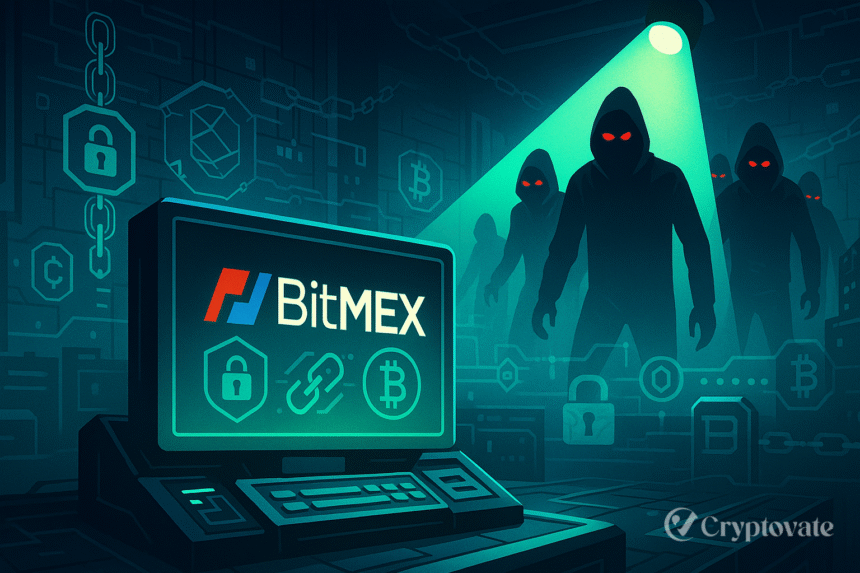– Ad –
| Getting your Trinity Audio player ready... |
In a stunning display of cybersecurity prowess, BitMEX, a leading cryptocurrency exchange, recently foiled a sophisticated attack by the North Korea-linked Lazarus Group. Known for high-profile cyberattacks like the 2014 Sony Pictures hack and the 2017 WannaCry ransomware, the Lazarus Group targeted BitMEX with a social engineering scheme. This article explores how BitMEX turned the tables, exposing the hackers’ vulnerabilities and reinforcing the importance of vigilance in the crypto world.
The Phishing Plot Unraveled
The attack began with a deceptive LinkedIn message targeting a BitMEX employee. Posing as a recruiter, the attacker lured the employee with a fake NFT marketplace project. Hidden within the proposal was the “BeaverTail” malware, a tool previously tied to Lazarus by Palo Alto Networks’ Unit 42. Designed to steal sensitive data, the malware could have compromised BitMEX’s operations. However, the employee’s quick thinking and immediate reporting halted the attack in its tracks.
BitMEX’s security team sprang into action, tracing the phishing attempt to a GitHub repository shared by the attacker. This led to a Supabase database containing 856 entries, including 174 unique username-hostname combinations. The find was a treasure trove, unveiling vital insights into the Lazarus Group’s activities.
Exposing Lazarus’s Blunders
The investigation uncovered surprising lapses in the Lazarus Group’s operational security. Exposed IP addresses and reused malicious code pointed to a less sophisticated subgroup within the hacking collective. Timestamps in the database showed a drop in activity between 8 AM and 1 PM UTC (5 PM to 10 PM Pyongyang time), suggesting a structured work schedule in North Korea. These findings, detailed in BitMEX’s official blog post, highlight how even elite hackers can make costly mistakes.
Why This Matters for Crypto
The Lazarus Group has stolen over $2 billion in cryptocurrency, targeting exchanges and DeFi platforms. BitMEX’s success demonstrates that robust security protocols and employee awareness can counter such threats. By exposing the group’s IP addresses and operational patterns, BitMEX has provided the crypto industry with valuable intelligence to bolster defenses. However, experts warn that Lazarus may now target less secure platforms, making industry-wide vigilance essential.
Key Takeaways
- Employee Vigilance: The employee’s quick reporting was pivotal in stopping the attack.
- Hacker Errors: Lazarus’s exposed database and reused code reveal their vulnerabilities.
- Industry Impact: BitMEX’s findings can help other platforms strengthen their security.
Also Read: Zero-Value Trap: The $2.6M Stablecoin Scam Shaking the Crypto World
Conclusion
BitMEX’s victory over the Lazarus Group is a landmark moment for crypto security. By outsmarting the hackers and exposing their operational flaws, BitMEX has set a high standard for cybersecurity in the industry. As cyber threats evolve, this incident underscores the need for constant alertness and robust defenses to protect the crypto ecosystem.
FAQs
What was the Lazarus Group’s attack method against BitMEX?
The Lazarus Group used a LinkedIn phishing campaign, posing as a recruiter to send a malicious NFT project proposal containing “BeaverTail” malware.
How did BitMEX stop the attack?
An employee reported the suspicious message, allowing BitMEX’s security team to investigate and uncover the attackers’ database and IP addresses.
What did BitMEX learn about the Lazarus Group?
BitMEX discovered exposed IP addresses, reused code, and a database with 856 entries, revealing a structured work schedule and security lapses.
How can the crypto industry use this information?
The exposed data can help exchanges and platforms strengthen their defenses against Lazarus Group attacks, enhancing overall industry security.

















